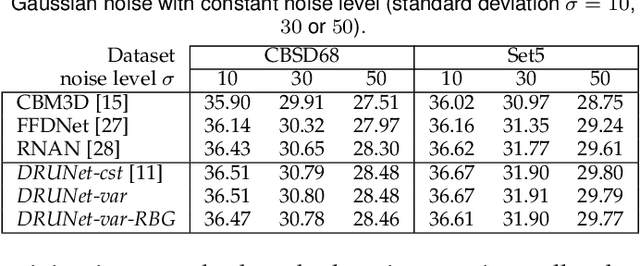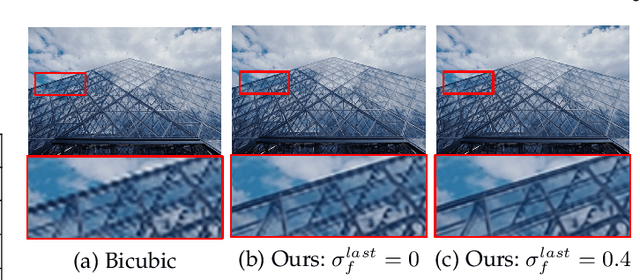Mikael Le Pendu
Learned Gradient of a Regularizer for Plug-and-Play Gradient Descent
Apr 29, 2022



Abstract:The Plug-and-Play (PnP) framework allows integrating advanced image denoising priors into optimization algorithms, to efficiently solve a variety of image restoration tasks. The Plug-and-Play alternating direction method of multipliers (ADMM) and the Regularization by Denoising (RED) algorithms are two examples of such methods that made a breakthrough in image restoration. However, while the former method only applies to proximal algorithms, it has recently been shown that there exists no regularization that explains the RED algorithm when the denoisers lack Jacobian symmetry, which happen to be the case of most practical denoisers. To the best of our knowledge, there exists no method for training a network that directly represents the gradient of a regularizer, which can be directly used in Plug-and-Play gradient-based algorithms. We show that it is possible to train a denoiser along with a network that corresponds to the gradient of its regularizer. We use this gradient of the regularizer in gradient-based optimization methods and obtain better results comparing to other generic Plug-and-Play approaches. We also show that the regularizer can be used as a pre-trained network for unrolled gradient descent. Lastly, we show that the resulting denoiser allows for a quick convergence of the Plug-and-Play ADMM.
Preconditioned Plug-and-Play ADMM with Locally Adjustable Denoiser for Image Restoration
Oct 01, 2021



Abstract:Plug-and-Play optimization recently emerged as a powerful technique for solving inverse problems by plugging a denoiser into a classical optimization algorithm. The denoiser accounts for the regularization and therefore implicitly determines the prior knowledge on the data, hence replacing typical handcrafted priors. In this paper, we extend the concept of plug-and-play optimization to use denoisers that can be parameterized for non-constant noise variance. In that aim, we introduce a preconditioning of the ADMM algorithm, which mathematically justifies the use of such an adjustable denoiser. We additionally propose a procedure for training a convolutional neural network for high quality non-blind image denoising that also allows for pixel-wise control of the noise standard deviation. We show that our pixel-wise adjustable denoiser, along with a suitable preconditioning strategy, can further improve the plug-and-play ADMM approach for several applications, including image completion, interpolation, demosaicing and Poisson denoising.
A Fourier Disparity Layer representation for Light Fields
Jan 21, 2019



Abstract:In this paper, we present a new Light Field representation for efficient Light Field processing and rendering called Fourier Disparity Layers (FDL). The proposed FDL representation samples the Light Field in the depth (or equivalently the disparity) dimension by decomposing the scene as a discrete sum of layers. The layers can be constructed from various types of Light Field inputs including a set of sub-aperture images, a focal stack, or even a combination of both. From our derivations in the Fourier domain, the layers are simply obtained by a regularized least square regression performed independently at each spatial frequency, which is efficiently parallelized in a GPU implementation. Our model is also used to derive a gradient descent based calibration step that estimates the input view positions and an optimal set of disparity values required for the layer construction. Once the layers are known, they can be simply shifted and filtered to produce different viewpoints of the scene while controlling the focus and simulating a camera aperture of arbitrary shape and size. Our implementation in the Fourier domain allows real time Light Field rendering. Finally, direct applications such as view interpolation or extrapolation and denoising are presented and evaluated.
 Add to Chrome
Add to Chrome Add to Firefox
Add to Firefox Add to Edge
Add to Edge